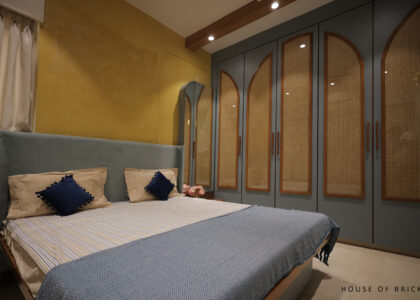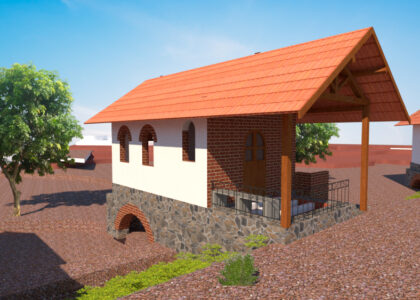When it comes to building or renovating a home in India, wall finishes play a crucial role in how a space feels, looks, and performs over time. Among the many options, lime plaster and cement plaster remain two of the most popular. Each has its own strengths, but understanding how they differ can help homeowners, architects, and interior designers make an informed decision that balances beauty, comfort, and sustainability.
This in-depth guide explains the unique qualities of lime plaster and cement plaster, compares their performance in Indian climates, and offers expert advice on choosing the best finish for your home.
Understanding the Basics
What is Lime Plaster?
Lime plaster is made from lime putty (slaked lime) mixed with fine sand and natural fibers. It has been used for centuries in heritage buildings and continues to be valued for its breathability, durability, and natural aesthetics. Modern applications, such as the Lime Plaster Service offered by House of Lime, revive this ancient technique with a contemporary twist, ensuring a smooth, elegant finish while maintaining eco-friendly credentials.
What is Cement Plaster?
Cement plaster, on the other hand, is a mix of Portland cement, sand, and water. It sets quickly and provides a hard, strong surface that can be painted or finished in various ways. Cement plaster is widely used in modern construction because of its affordability and fast application, but it has certain limitations when it comes to thermal comfort and moisture regulation.
Key Differences Between Lime Plaster and Cement Plaster
1. Breathability and Moisture Regulation
Lime plaster allows walls to “breathe,” which means it lets moisture escape rather than trapping it. This natural ventilation reduces problems like dampness, efflorescence, and mold growth—common issues in humid or coastal Indian regions. Cement plaster, being less permeable, can trap moisture inside walls, leading to cracks and peeling paint over time.
2. Thermal Comfort
One of the most compelling advantages of lime plaster is its ability to maintain indoor temperature. If you’re curious about how lime plaster can keep your home cool during scorching Indian summers, the answer lies in its microscopic air pockets and natural insulation. Cement plaster lacks this property and can make interiors feel hotter.
3. Durability and Flexibility
Lime plaster hardens gradually over time, creating a strong yet slightly flexible surface. This flexibility helps it resist hairline cracks caused by minor structural movements or temperature fluctuations. Cement plaster sets quickly and becomes rigid, which means it’s more prone to cracking when buildings expand or settle.
4. Environmental Impact
Lime is a naturally occurring material and absorbs carbon dioxide as it cures, making it a carbon-neutral or even carbon-negative material. Cement production, however, is energy-intensive and contributes significantly to greenhouse gas emissions. Choosing lime plaster supports a more sustainable and eco-conscious home design.
Aesthetics and Design Possibilities
Timeless Texture and Natural Colors
Lime plaster offers a soft, matte finish that lends depth and warmth to interiors. It can be tinted with natural pigments to create earthy hues or polished for a subtle sheen. Traditional finishes like Araish Plaster in India showcase the luxurious, marble-like appearance that is ideal for heritage homes or modern minimalist interiors.
Compatibility with Luxury Interiors
For high-end residences, selecting the right wall for luxury interior is key to achieving a sophisticated look. Lime plaster seamlessly integrates with premium materials such as natural stone, wood, and metal, making it a perfect backdrop for bespoke furniture and art.
Cement plaster can be finished smoothly and painted in any color, but it rarely matches the rich texture and organic appeal of lime. Over time, cement walls can also show hairline cracks and unevenness, detracting from a high-end finish.
Practical Considerations in Indian Homes
Climate Suitability
India’s diverse climate—from humid coasts to dry deserts and cold Himalayan regions—makes material choice critical. Lime plaster’s breathability and thermal properties make it ideal for coastal areas like Kerala, Rajasthan’s arid zones, and even hill stations where condensation can be a problem. Cement plaster may work for budget projects but often requires frequent maintenance in challenging climates.
Longevity and Maintenance
While the initial application of lime plaster may require skilled craftsmanship, its longevity offsets the effort. Properly applied lime plaster can last decades with minimal upkeep, and small repairs can blend seamlessly. Cement plaster often needs repainting and patching as cracks develop.
Cost Perspective
At first glance, cement plaster appears cheaper because of lower material costs and faster application. However, when you factor in energy savings, lower maintenance, and longer life, lime plaster can prove more cost-effective over the long term.
Expert Guidance for Your Project
Choosing the right plaster is not just about materials—it’s also about design vision. A professional Architectural Design Consultant can evaluate your space, climate, and aesthetic goals to recommend the most suitable wall finish. At House of Lime, experienced consultants help homeowners and architects integrate lime plaster into both new constructions and restorations.
Lime Plaster vs Gypsum
Another option often compared with lime is gypsum plaster. For homeowners considering all possibilities, Lime Plaster vs Gypsum is an important read. Lime offers superior breathability and environmental benefits, whereas gypsum provides quick setting times but is less durable in humid conditions. In most Indian homes, especially where natural cooling and longevity matter, lime emerges as the better choice.
Step-by-Step: How to Decide
- Assess Your Climate and Building Type
Coastal, humid, or heritage structures benefit most from lime’s breathability and cooling properties. - Consider Long-Term Costs
While lime may require skilled artisans, its durability and low maintenance make it more economical over decades. - Think About Aesthetics
If you’re aiming for an organic, timeless, or luxury look, lime plaster and finishes like Araish offer unmatched character. - Consult Professionals
Working with an expert design consultant ensures that the choice aligns with your architectural style and functional needs.
Case Studies: Lime in Modern Indian Homes
- Rajasthan Heritage Restorations
Many havelis and boutique hotels are turning back to lime plaster to preserve authenticity while improving energy efficiency. - Urban Luxury Apartments
Premium residences in cities like Bengaluru and Mumbai use lime plaster for its chic texture and natural cooling, making interiors elegant and sustainable. - Eco-Conscious Villas
In Kerala and Goa, homeowners opting for natural materials find lime plaster ideal for resisting humidity and enhancing indoor air quality.
Conclusion: The Better Choice for Your Indian Home
The debate of lime plaster vs cement plaster ultimately comes down to priorities. Cement plaster is quick and initially inexpensive but lacks breathability and long-term resilience. Lime plaster, by contrast, provides natural cooling, flexibility, and eco-friendliness, making it a wise investment for homes that value comfort, style, and sustainability.
Whether you’re restoring a heritage property or designing a contemporary villa, opting for lime means choosing beauty and durability rooted in centuries of Indian craftsmanship.
For expert application and tailored advice, explore the Lime Plaster Service by House of Lime and experience the difference that natural materials can make.







